Humans have occupied the Orkney Archipelago since at least the New Stone Age. Numerous monuments and buildings are dated to over 5000 years ago.
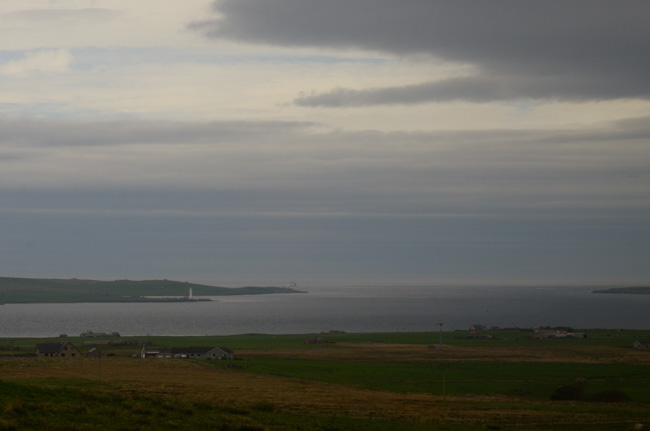
Scapa Flow is a huge natural harbor amid several of the Orkney Islands. It has been used as an anchorage since Viking times. Nowadays it is key to accessing the North Sea oil sites. We saw a number of tankers as we drove by.
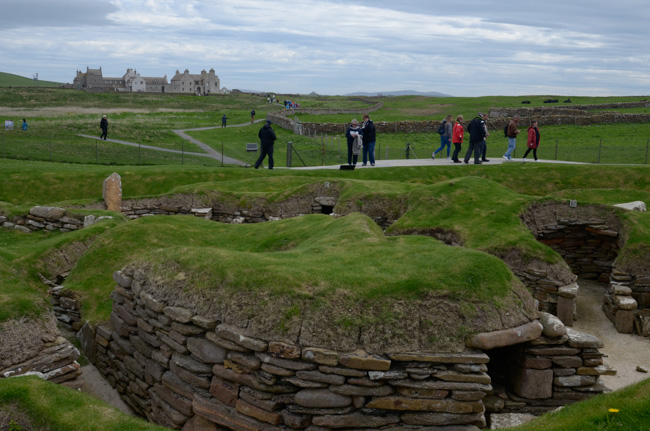
Skara Brae is a Neolithic village abandoned circa 2500BC after being occupied for several hundred years. It predates Stonehenge and the Great Pyramids. The village was buried for millennia by drifted sand until a destructive storm in the mid 19th century uncovered parts of it. That burial was responsible for its remarkable state of perseveration.
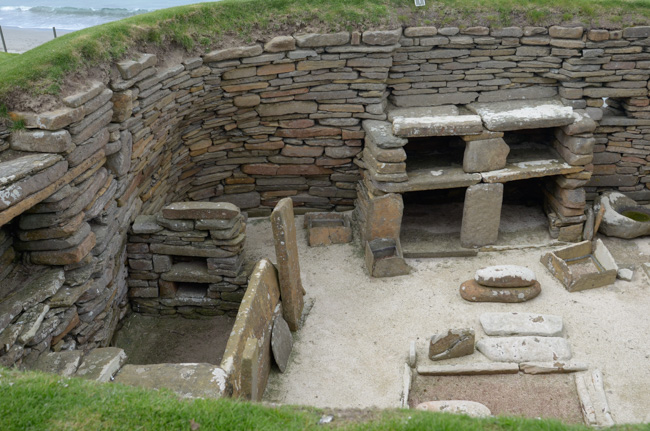
The homes had turf roofs. Builders dug each dwelling into an even-more-ancient midden or trash heap to provide additional insulation. The stone furnishings included bedsteads, dressers, various storage niches, and water-tight containers used to store food or keep fish alive until ready to be cooked. Each dwelling had a central hearth. Researchers have even found evidence of primitive toilets.
No one knows why the village was abandoned. Two theories are a cooling climate and erosion caused by severe storms such as the ones that first buried and then uncovered the site.
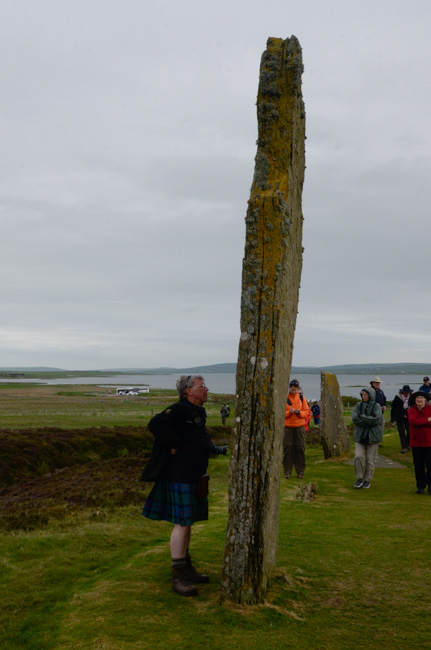
After exploring Skara Brae, we proceeded to the Ring of Brodgar. The ring is part of a much larger collection of Neolithic monuments and burial mounds. Although it has not been fully excavated and dated, archaeologists believe that it was erected no later than 2000BC.
Experts speculate on the function of the ring and the intentions of the builders, but there does not appear to be any wide-spread agreement. The link above has more information.
Unlike Stonehenge, it is still possible to roam amidst the stones and touch them. My Scottish fiddle teacher wrote a haunting lament after a visit to the site. Now that I've returned, I've added it to my practice list.
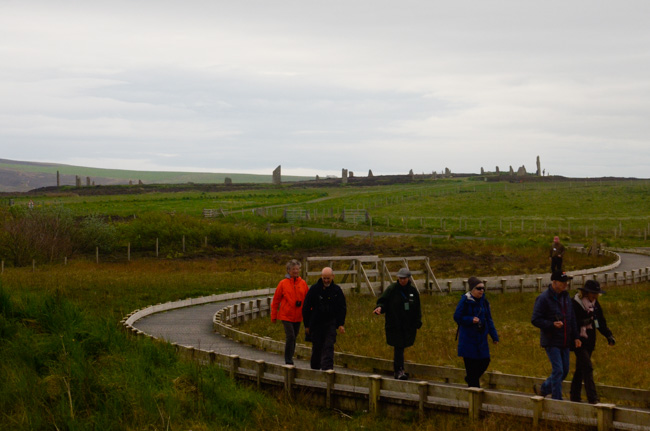
The ring is the 3rd largest in the UK and is even more enigmatic than Stonehenge.
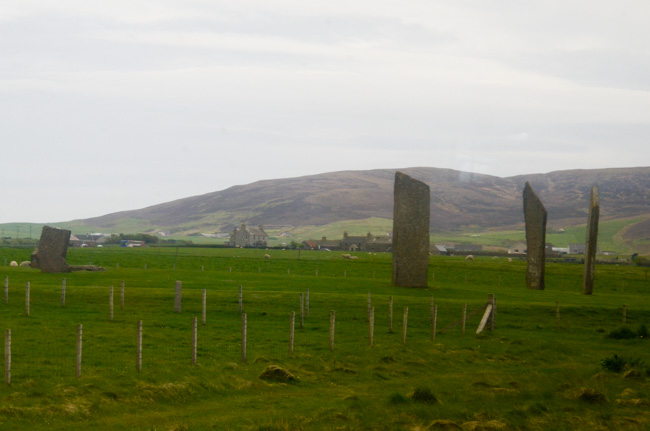
We did not stop at the nearby Standing Stones of Stenness. Radio-carbon analysis has dated this construction to 3100BC, which makes it one of the oldest such circles in Britain.
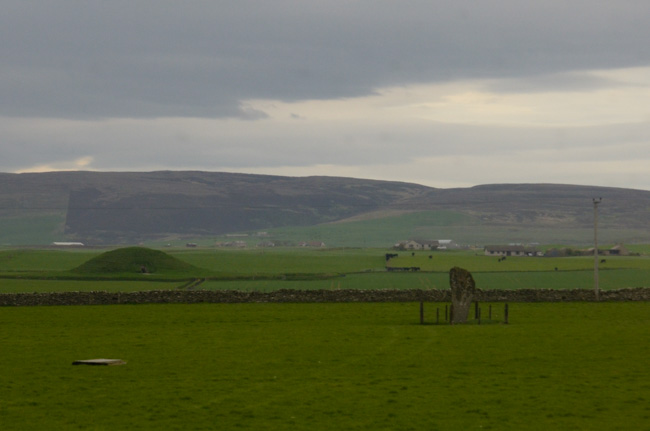
Two other structures that are part of the overall complex are Maeshowe, an ancient chambered cairn, and the Barnhouse Stone, a single standing stone precisely aligned with the entrance to the cairn. We were unable to take time to explore these.
I have added Orkney to my "next time list."
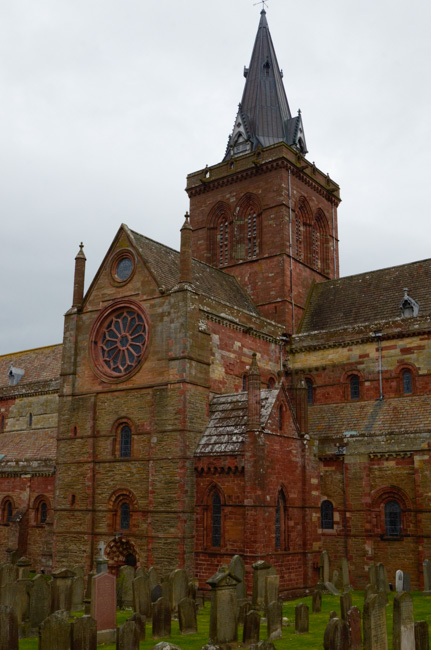
After our Neolithic explorations we returned to the city of Kirkwall. Earl Rognvald Kolsson founded St. Magnus' Cathedral in the 12th century and dedicated it to his uncle Magnus, who was canonized in 1135 after being martyred in 1117. Red and yellow sandstone gives it a polychrome effect.
Norway ruled Orkney until the 15th century. Even today the Orcadians do not quite consider themselves part of Scotland.
Unlike most churches, St. Magnus is not owned by the congregation that meets there. It is owned by the city of Kirkwall. It is now a Presbyterian parish church and therefore no longer a cathedral, which is by definition the seat of a bishop.
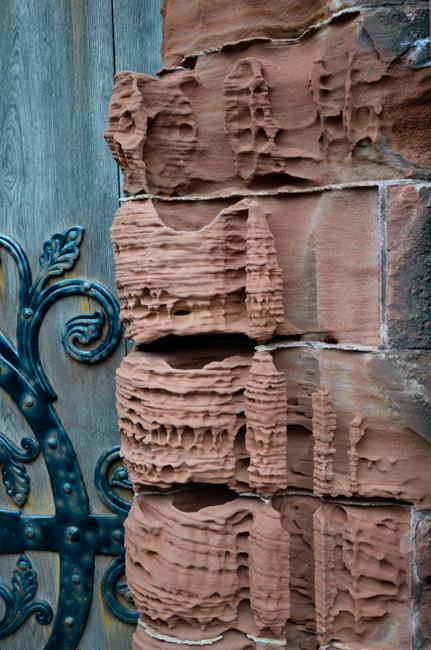
The sandstone used to construct the cathedral is soft and has eroded in spots from wind & rain.
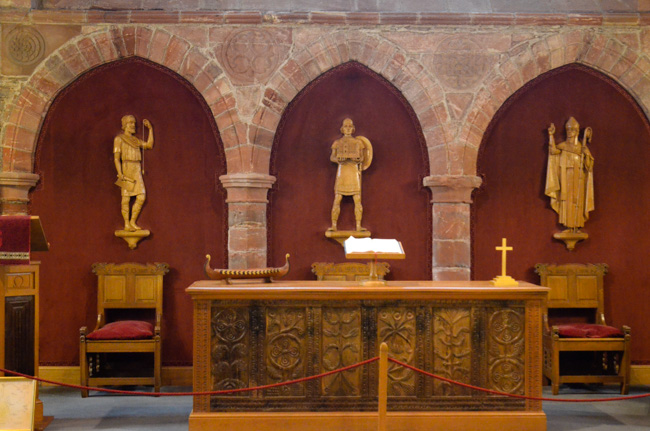
The trappings in the cathedral chancel, though modern, look back to its Norse beginnings.
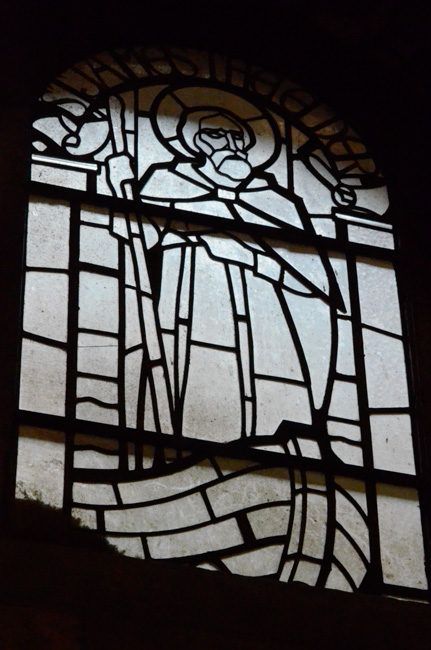
Many windows have been updated with stained glass, but the rendering of St. Magnus is still the original plain glass.
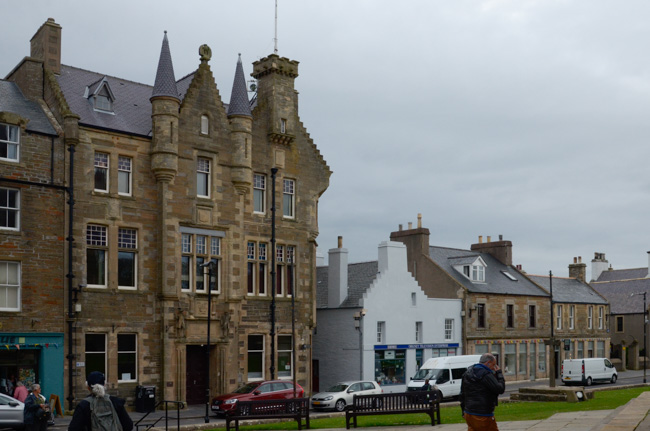
After visiting the cathedral we had free time to explore Kirkwall. Jim and I took the opportunity to eat "on the economy" at a harbor-side pub in the St. Ola hotel. It was good pub grub and we were glad to get away from ship's food for a change.
After dinner and our return to the ship, we enjoyed a concert by some fabulous local musicians called saltfishforty. We bought one of their albums and are planning to order the others online.
Click your "back" button to return to the previous page or click for our picture album.